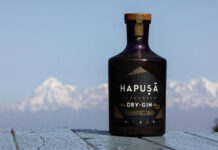

IT has always surprised me why sweet wines have never really set the heather on fire.
Some of you might think I am talking a load of rubbish and tell me that the white Zinfandel on your list is the biggest seller by a mile.
No disrespect, but that is not what I’m talking about.
It may taste sweeter than the other wines you have, but that doesn’t mean it’s a ‘true’ sweet wine.
A sweet (AKA dessert) wine can be defined by the grammes per litre (g/L) of sugar the liquid contains; a white Zinfandel, which is really classed as a medium-dry style, will usually have about 25 g/L whereas a ‘true’ sweet wine will have a bare minimum of 45g/L and sometimes even as much as 500g/L.
Sweet wines are made wherever it is possible to do so, in almost every corner of the wine world – from the snow-covered vines of Niagra in Canada to the sun-baked vineyards of Jerez in Spain; and, as you may have guessed, the location of production is key to the process.
The sweetness in these wines is achieved by concentrating the naturally occurring sugars through reducing the water content of the grapes (leaving them to become raisins) albeit in differing ways. The ‘Late Harvest’ style is as it sounds, by leaving the grapes on the vine longer than normal; ‘Passito’ is a style made famous by the Italians and southern French where the technique is to dry the grapes on straw mats; and ‘Eiswein/ Ice Wine’ is where the grapes are left to freeze to below -7ºC before they are picked.
Probably the most famous method is ‘Noble Rot’ – the style used for the world famous and expensive Sauternes from France and Tokaji from Hungary. Warm and damp conditions are required for this to culture a fungus called Botrytis Cinerea, which sucks the water out of the grapes. When the desired levels of sugar are obtained, the grapes are crushed and the beautifully viscous liquid is then made into the final product.
The one essential thing to note, though, is that what makes a sweet wine a fantastic drink is not just the sugar content – it’s about the balance between that and the wine’s alcohol, acids and tannins. In other words, genuine winemaking skill is required.
If you’re a novice to all this, two affordable wines that I recommend are the Moscatel Oro by Torres and the Late Harvest Sauvignon Blanc from Concha y Toro – enjoy!
The Cork Dork fact:
In the 2000 vintage, the sugar content of the super-sweet Hungarian Tokaji Eszencia exceeded 900g per litre.
























